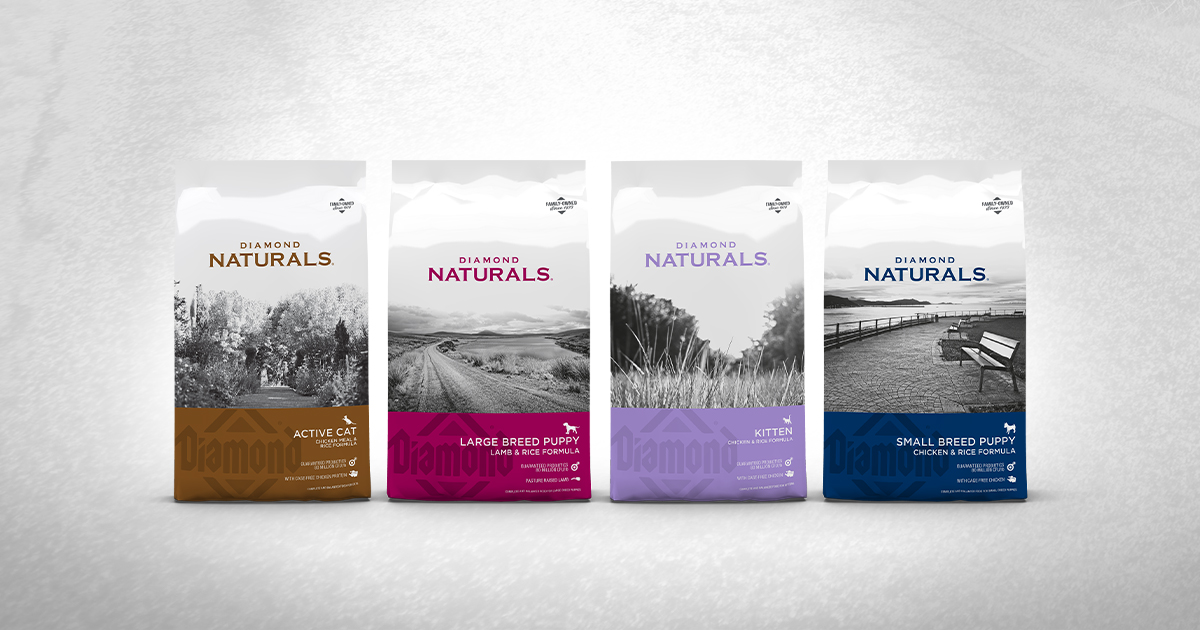Welcome to “Debarking Pet Myths,” a monthly series dedicated to addressing common myths, misconceptions and old wives’ tales about dogs and cats.
“What pet food is best for my dog (or cat)?” is a question commonly asked of veterinarians and veterinary technicians. With so many choices available to pet owners — at pet specialty stores, grocery stores and online retailers — it can be confusing to know what’s best for an individual pet.
When it comes to recommending an appropriate food for your dog or cat, veterinary professionals consider your pet’s age, breed, reproductive status, activity level, body condition and medical issues. Collectively, these factors form the basis of life-stage and lifestyle nutrition, which brings us to this month’s topic: Pets need life-stage-appropriate food.
The right food, in the right amount, at the right time
It’s true: dogs and cats benefit from life-stage-appropriate diets. However, they may also need a lifestyle-appropriate food, if they’re a working dog or an indoor cat, for instance. Or they may benefit from eating a therapeutic diet if they have a nutrition-responsive health problem such as chronic kidney disease or obesity.
Proper nutrition is vital to pet health and longevity. All pets need to eat an adequate amount of nutrients every day to be healthy, and those requirements vary with the dog’s or cat’s life stage. For example, the needs of a growing puppy or kitten are different than those of an adult dog or cat that’s fairly sedentary. As pets age, their nutritional requirements may change again.
What is life-stage nutrition?
According to Small Animal Clinical Nutrition, life-stage nutrition is the practice of feeding foods designed to meet pets’ optimal nutritional needs at a specific age or physiologic state — for example, growth, maintenance, reproduction or senior. Life-stage nutrition recognizes that feeding either above or below an optimal nutrient range for a particular life stage can negatively affect the pet’s performance or health.
Here’s a brief overview on how nutritional requirements can vary by life stage:
Puppies, including large breed puppies, and kittens
As a general rule of thumb, growing puppies need more calories, protein and fat and higher levels of key minerals (calcium and phosphorus) than adult dogs. Animal nutritionists have found there are differences in the physiology of small to large dogs, and puppies of various breeds gain weight and mature at very different rates. For example, large- and giant-breed puppies are more sensitive to an excess or shortage of calcium while their bones are growing compared to small- and medium-breed puppies. So, while it isn’t absolutely necessary to feed food that’s specially formulated for a specific breed size, there are benefits especially during growth.
For cats, nutrient requirements are higher during growth than during any other life stage. Kittens need higher levels of protein, key minerals, vitamin A and calories than adult cats to fuel their tremendous growth.
Studies in many mammals, including babies, puppies and kittens, have found that increased levels of DHA (docosahexaenoic acid), a natural omega-3 fatty acid, help with brain and vision development. As a result of these findings, DHA is now added to all-life-stages, puppy and kitten formulas.

For all of those reasons, it’s recommended to feed puppies and kittens a food that’s designed for growth until they’re 12 to 18 months old (depending on their breed and size). This could be a puppy- or kitten-specific formula or an “all life stages” diet, which would also be formulated to meet the nutritional requirements of growing animals.
Adult (young and middle-aged) dogs and cats
Healthy young adult and middle-aged pets need enough calories and nutrients — protein, carbohydrates, fat, vitamins and minerals — to satisfy their energy needs and to maintain and repair body tissues. This maintenance phase typically occurs in dogs ranging in age from 1 to 7 years old and cats between the ages of 12 months to 10 years. Numerous adult foods are available, so finding an appropriate adult maintenance food that provides optimal nutrition and that your pet likes should be (relatively) simple.
Reproducing female dogs and cats
Female dogs and cats that are pregnant or nursing have substantially greater nutritional requirements than those adult pets that aren’t pregnant or nursing. In fact, the nutritional needs of mother dogs and cats near the end of gestation and during lactation are similar to those of newborn puppies and kittens.
In the case of a pregnant dog, her requirements for calcium and phosphorus increase by about 60 percent during the last 5 weeks of pregnancy because her puppies’ bones are growing rapidly. Her protein needs will jump 40 to 70 percent while her energy requirements will climb 25 to 50 percent during late pregnancy, depending on the number of puppies in the litter. Because of these increased demands, a pregnant dog should be switched to a higher-energy diet at about week 5 of pregnancy.
After giving birth, the nutritional requirements of a lactating dog remain high — as much as two to four times that of maintenance — for several weeks. Water, calcium, phosphorus, protein and energy needs will be greater than maintenance needs for about eight weeks after whelping.
A pregnant cat gradually increases the amount of food she eats during gestation. Then, while nursing, she’ll need about two to three times more energy than she did before pregnancy. An appropriate food for a pregnant or nursing cat should have increased levels of calcium, phosphorus, magnesium, protein and vitamin A.
All-life-stages dog and cat foods and many puppy and kitten foods are formulated to meet the needs of pregnant or nursing dogs and cats in addition to meeting the needs of growing puppies and kittens.
Senior and geriatric dogs and cats
Aging brings a number of changes that can affect an older dog’s or cat’s nutritional requirements:
- Lower energy (calorie) needs due to slower metabolism and less activity
- A tendency to gain fat and lose muscle
- Decreased senses of smell, taste and sight
- Reduced ability to absorb or use protein and fat from food
- Presence of chronic diseases such as kidney disease, heart disease or arthritis
Your pet’s health status determines whether or not you need to feed a “senior” diet. According to the veterinary nutritionists at Tufts University, many older dogs and cats can continue to eat a good quality pet food formulated for adult maintenance, while others will benefit from eating a diet specially formulated for seniors. If you have any questions about whether your older pet should be switched to a different diet, talk with your veterinarian.

RELATED POST: Nutrients and Ingredients: Not Necessarily the Same







